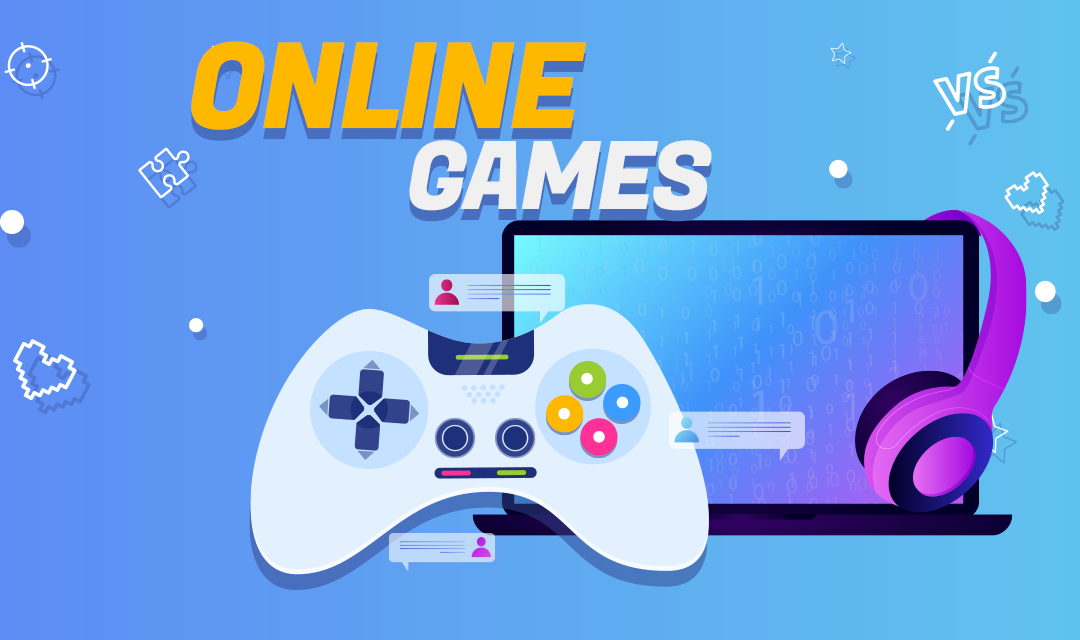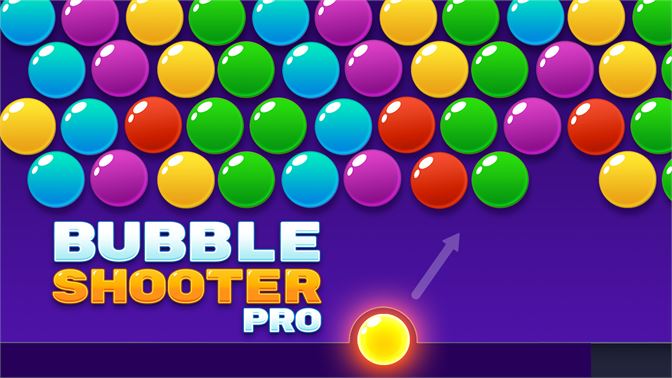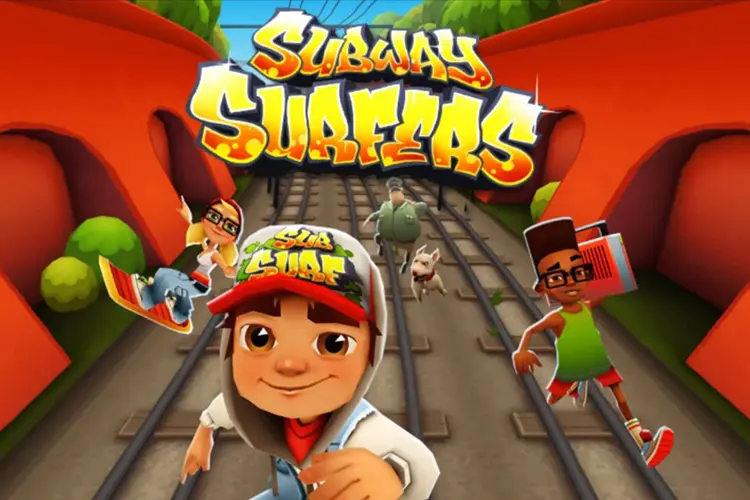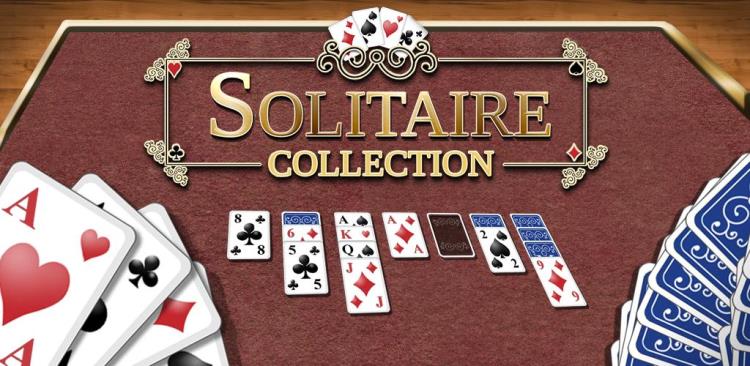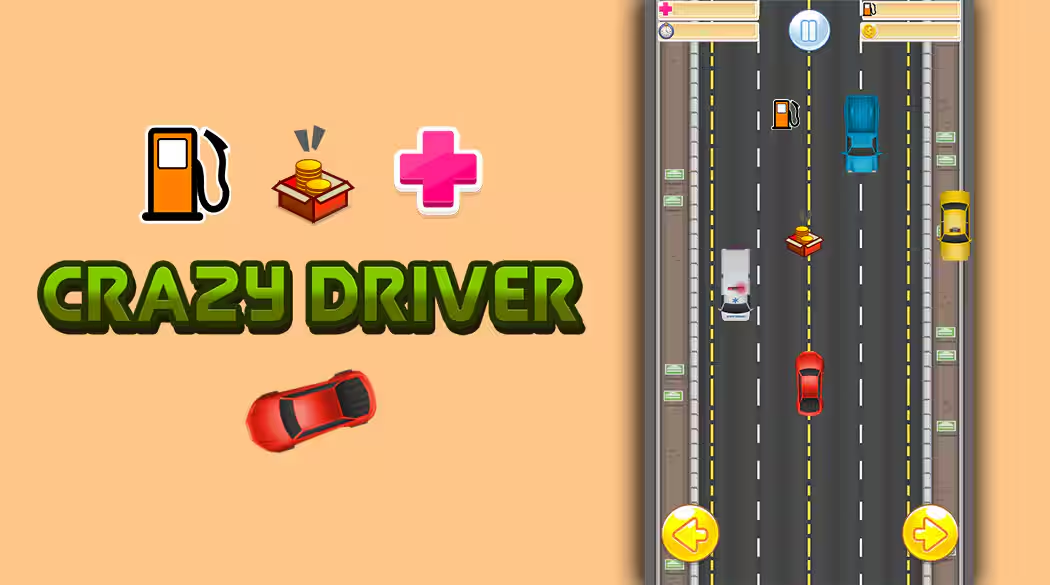The Solitaire Collection: A Timeless Journey Through Card Games Solitaire, a card game steeped in history and simplicity, has captivated players for centuries with its blend of strategy and patience. Its appeal lies in its ease of access and the mental challenge it offers, making it a perennial favorite in the world of card games. The “Solitaire Collection” refers to a curated assortment of solitaire variants that showcase the versatility and depth of this classic game. In this article, we explore the evolution and diversity of solitaire collections, highlighting their historical significance, popular variations, and the role they play in modern gaming. The Origins of Solitaire: The origins of solitaire, also known as Patience in some parts of the world, can be traced back to the 18th century. The game’s solitary nature made it particularly appealing during times of personal reflection or leisure. Early forms of solitaire were often played with a standard deck of cards and were designed to be played by a single player, aiming to rearrange the deck into a specific order or achieve certain configurations. The Evolution of Solitaire Collections: As solitaire evolved, so did the variety of its versions. The “Solitaire Collection” concept emerged as enthusiasts and developers sought to compile various solitaire variants into a single, cohesive package. This approach not only preserves the classic game but also introduces players to new and intriguing challenges. 1. Classic Solitaire The backbone of any solitaire collection is the classic Klondike solitaire, also known simply as Solitaire. This version involves sorting a shuffled deck of cards into four suits in ascending order. Klondike’s appeal lies in its combination of skill and luck, as players must strategically manage their moves to uncover and organize the cards. 2. Spider Solitaire Spider Solitaire introduces a more complex twist to the classic game. Played with two decks of cards, the goal is to build sequences of cards in descending order from King to Ace. Players can only move cards within a stack if they are in sequential order, making this variant more challenging and strategic. 3. FreeCell Solitaire FreeCell Solitaire is known for its unique approach to card management. Unlike other solitaire games, FreeCell allows players to move any card to a free cell, providing additional strategic options. The game’s layout, with all cards face-up, offers players a clearer view of the game’s progress, enhancing strategic planning. 4. Pyramid Solitaire In Pyramid Solitaire, the objective is to match pairs of cards that sum up to 13, gradually clearing a pyramid-shaped tableau. This variant emphasizes arithmetic skills and pattern recognition, providing a different kind of mental challenge compared to traditional solitaire. 5. TriPeaks Solitaire TriPeaks Solitaire features a layout of three overlapping peaks of cards. The goal is to clear the board by selecting cards that are either one rank higher or lower than the top card of the stack. This variant introduces a different visual and strategic element, requiring players to carefully plan their moves. 6. Golf Solitaire Golf Solitaire is a game where players aim to clear a tableau of cards by drawing cards from a deck that are either one rank higher or lower than the top card of a discard pile. The game’s objective is to remove all cards from the tableau, and its simplicity makes it accessible while still providing a strategic challenge. The Appeal of Solitaire Collections: The Solitaire Collection offers players a diverse array of challenges, catering to different skill levels and preferences. By combining classic and innovative variants, these collections provide a comprehensive solitaire experience that can be both relaxing and mentally stimulating. Accessibility: Solitaire games are easy to learn and require minimal equipment, making them accessible to players of all ages and backgrounds. The Solitaire Collection makes it even easier by providing a range of games in one place, often with digital versions available for convenient play on various devices. Mental Challenge: Each variant of solitaire presents its own set of rules and strategies, offering players opportunities to test and improve their problem-solving skills. The mental exercise involved in planning and executing moves is a significant draw for solitaire enthusiasts. Nostalgia and Tradition: For many, solitaire evokes a sense of nostalgia and tradition. Whether played with physical cards or in digital form, the game remains a cherished pastime that connects players to its rich history and enduring appeal. Conclusion: The Solitaire Collection represents a celebration of one of the most enduring and beloved card games in history. By exploring different variants and enjoying the mental challenges they offer, players can appreciate the versatility and timelessness of solitaire. Whether you are a casual player seeking relaxation or a strategic thinker looking for a new challenge, the Solitaire Collection has something to offer for everyone.
Exploring the Evolution of Video Games: A Journey Through Time
Exploring the Evolution of Video Games: A Journey Through Time Video games have undergone a remarkable transformation since their inception, evolving from simple pixelated amusements to complex, immersive experiences that captivate millions around the world. This journey through the evolution of video games reflects broader changes in technology, culture, and society. Let’s dive into this fascinating history and explore how video games have developed into a multifaceted medium that influences and mirrors our world. The Dawn of Video Gaming: 1970s – 1980s The story of video games begins in the 1970s with the creation of some of the earliest arcade games. Titles like “Pong” (1972) by Atari introduced the public to the concept of interactive entertainment. Simple yet addictive, Pong’s success laid the groundwork for future innovations in gaming. As the 1980s rolled in, video games began to gain more popularity, thanks in part to the arcade boom and the rise of home consoles. “Space Invaders” (1978) and “Pac-Man” (1980) became cultural phenomena, their simple mechanics and memorable characters making them accessible and enjoyable for a broad audience. This era also saw the birth of iconic franchises like “Donkey Kong” (1981) and “Super Mario Bros.” (1985), which not only pushed the boundaries of game design but also laid the foundation for platforming and adventure genres. The 8-bit graphics of this era, though primitive by today’s standards, were revolutionary at the time and contributed to the distinctive charm of early video games. The Rise of Complexity: 1990s – Early 2000s The 1990s marked a period of rapid technological advancement and increased complexity in video games. The introduction of 16-bit and later 32-bit consoles allowed for richer graphics, more complex gameplay, and deeper storytelling. Games like “The Legend of Zelda: Ocarina of Time” (1998) and “Final Fantasy VII” (1997) demonstrated the potential for video games to offer expansive worlds and intricate narratives. This era also saw the rise of 3D graphics, which transformed game design and player experience. Titles like “Super Mario 64” (1996) and “Grand Theft Auto III” (2001) showcased the potential of 3D environments and open-world exploration. The ability to move freely in a three-dimensional space added a new layer of immersion and freedom, fundamentally altering how players interacted with virtual worlds. The Modern Era: 2000s – Present The 2000s ushered in an era of high-definition graphics, online multiplayer experiences, and innovative game mechanics. With the advent of consoles like the Xbox 360 and PlayStation 3, games began to feature photorealistic graphics and sophisticated artificial intelligence. Franchises such as “The Elder Scrolls V: Skyrim” (2011) and “The Last of Us” (2013) pushed the boundaries of storytelling and visual fidelity. The rise of digital distribution platforms like Steam and the App Store also democratized game development. Independent developers gained access to tools and audiences that were previously out of reach, leading to the creation of critically acclaimed games like “Braid” (2008) and “Hades” (2020). These games showcased innovative mechanics and storytelling techniques that challenged traditional conventions. Furthermore, the advent of virtual reality (VR) and augmented reality (AR) technologies is shaping the future of gaming. VR experiences such as “Half-Life: Alyx” (2020) offer unprecedented immersion, while AR games like “Pokémon GO” (2016) blend virtual elements with the real world in exciting new ways. The Future of Gaming As we look to the future, the potential for video games seems boundless. Advances in artificial intelligence, machine learning, and cloud gaming promise to bring even more realistic and interactive experiences. Games are likely to continue evolving as platforms for storytelling, social interaction, and creativity. Video games are more than just a form of entertainment; they are a reflection of our technological progress and cultural shifts. From the pixelated screens of the 1970s to the expansive virtual worlds of today, the journey of video games mirrors our own quest for innovation and exploration. As the medium continues to evolve, one thing is certain: video games will remain a powerful and influential force in our lives for years to come.
Diamond Dodger: A Dazzling Adventure in Reflex and Strategy
PLAY Diamond Dodger: A Dazzling Adventure in Reflex and Strategy In the vibrant world of arcade-style games, “Diamond Dodger” has carved out a niche as a compelling blend of fast-paced action and strategic gameplay. Released in 2024, Diamond Dodger captivates players with its unique premise, engaging mechanics, and colorful presentation. This article delves into the core aspects of Diamond Dodger, exploring its gameplay, visual appeal, and why it has become a favorite among gamers seeking a challenging and entertaining experience. The Concept Behind Diamond Dodger: Diamond Dodger is an action-packed game where players navigate a character through a series of increasingly complex levels while avoiding hazards and collecting valuable diamonds. The game combines elements of reflex-based gameplay with strategic planning, creating an experience that is both thrilling and intellectually stimulating. Set against a backdrop of dazzling graphics and dynamic challenges, Diamond Dodger offers an engaging twist on classic arcade gameplay. Gameplay Mechanics: Setup and Components: Diamond Dodger typically features a series of levels or stages, each with its own layout and set of challenges. The player controls a character that moves through a maze-like environment filled with obstacles and enemies. Diamonds are scattered throughout the level, and the objective is to collect as many as possible while avoiding hazards. Objective: The primary goal in Diamond Dodger is to collect diamonds while evading obstacles and enemies. Players must navigate through each level, avoiding dangerous traps and adversaries that can hinder their progress. Successfully collecting diamonds and reaching the end of each level without losing lives or taking damage is key to advancing through the game. Turn Structure: Diamond Dodger is typically played in real-time, with players controlling their character’s movements using a combination of directional inputs and action commands. The game may involve navigating mazes, jumping over obstacles, and timing movements to avoid hazards. Each level presents a unique set of challenges, requiring quick reflexes and strategic planning. Scoring and Progression: Players earn points based on the number of diamonds collected and the completion of levels. High scores are achieved by efficiently navigating through the levels, collecting diamonds, and avoiding damage. Progression through the game involves advancing to more challenging levels, each with increasingly difficult obstacles and enemies. Special Features: Diamond Dodger includes several special features that enhance the gameplay experience. These may include power-ups that grant temporary advantages, such as invincibility or increased speed, and special diamond types that offer bonus points or unique effects. The game may also feature boss battles or special challenge levels that test players’ skills and strategies. Visuals and Design: Diamond Dodger is known for its vibrant and eye-catching visual design. The game features colorful graphics and dynamic animations that bring the game world to life. Each level is designed with intricate details and visually distinct elements, creating an immersive and engaging experience. The character and enemy designs are often whimsical and creatively crafted, adding to the game’s overall charm. The visual effects, such as sparkling diamonds and animated obstacles, contribute to the game’s exciting and fast-paced atmosphere. The user interface is intuitive, allowing players to easily navigate controls and track their progress. Appeal and Community: The appeal of Diamond Dodger lies in its combination of fast-paced action and strategic gameplay. The game attracts players who enjoy reflex-based challenges and the thrill of navigating complex levels. Its engaging mechanics and colorful design make it accessible to both casual gamers and more dedicated players. The Diamond Dodger community is active and enthusiastic, with players sharing strategies, high scores, and level completion tips. Online forums and social media platforms provide spaces for discussions, fan creations, and community events. The game’s active community adds to its replayability and ongoing appeal. Future Prospects and Updates: Given the positive reception of Diamond Dodger, future updates and expansions are likely. These may include new levels, additional game modes, and enhanced features. Developers may also introduce seasonal events or special challenges to keep the gameplay experience fresh and engaging. Conclusion: Diamond Dodger offers a thrilling and visually captivating arcade experience that combines reflex-based action with strategic gameplay. Its dynamic levels, colorful design, and engaging mechanics make it a standout title in the arcade genre. Whether you’re navigating mazes, collecting diamonds, or avoiding hazards, Diamond Dodger provides an exciting and rewarding challenge. With its vibrant visuals and active community, Diamond Dodger continues to shine as a favorite among gamers seeking an exhilarating and entertaining adventure.
Crazy Driver: A High-Octane Journey Through Insane Racing
Crazy Driver: A High-Octane Journey Through Insane Racing In the world of racing games, where speed and precision often reign supreme, “Crazy Driver” offers a thrilling departure from the norm. Released in 2024, Crazy Driver stands out for its wild, over-the-top gameplay and its embrace of chaotic, adrenaline-pumping racing action. This article explores the core elements of Crazy Driver, its gameplay features, and why it has quickly become a hit among racing game enthusiasts. The Concept Behind Crazy Driver: Crazy Driver takes players on a high-speed adventure through a series of increasingly outrageous racing scenarios. Unlike traditional racing games that focus on realistic tracks and cars, Crazy Driver embraces a more fantastical approach. Players race through surreal environments, complete with impossible stunts, bizarre obstacles, and a variety of wild power-ups. The game’s emphasis is on fun, excitement, and unpredictability, offering a unique twist on the racing genre. Gameplay Mechanics: Setup and Components: Crazy Driver features a diverse array of tracks and environments, each designed to push the limits of racing excitement. Players choose from a selection of zany vehicles, each with its own quirks and special abilities. The game’s tracks are filled with obstacles, shortcuts, and interactive elements that add to the chaos. Objective: The primary goal in Crazy Driver is to finish races in first place while navigating through outrageous environments and overcoming a variety of challenges. Players must use their driving skills and strategic use of power-ups to outmaneuver opponents and handle the game’s unpredictable elements. Turn Structure: Crazy Driver is played in real-time, with players controlling their vehicles using a combination of steering, acceleration, and braking. The game’s controls are designed to be intuitive, allowing players to quickly adapt to the fast-paced action. Players must navigate through the tracks, avoid obstacles, and exploit shortcuts to gain an edge over their competitors. Power-Ups and Special Abilities: One of the standout features of Crazy Driver is its wide range of power-ups and special abilities. These can include everything from speed boosts and invincibility to bizarre effects like shrinking opponents or altering the track’s layout. Strategic use of these power-ups can turn the tide of a race and add an extra layer of excitement. Scoring and Progression: Players earn points and rewards based on their performance in races, including finishing positions and successful use of power-ups. Progression involves unlocking new vehicles, tracks, and customization options. The game features a variety of modes, including single-player challenges, time trials, and multiplayer races. Visuals and Design: Crazy Driver is known for its vibrant and imaginative visual design. The game features colorful, cartoonish graphics that enhance the sense of fun and chaos. Each track is uniquely designed, with imaginative environments that range from futuristic cities and enchanted forests to gravity-defying racetracks. The vehicles are similarly designed with a playful and exaggerated style, adding to the game’s whimsical charm. Dynamic visual effects, such as explosive power-ups and dramatic stunts, contribute to the game’s high-energy atmosphere. Appeal and Community: The appeal of Crazy Driver lies in its embrace of chaotic and entertaining racing action. The game attracts players who enjoy fast-paced, over-the-top gameplay and the thrill of navigating unpredictable tracks. Its engaging mechanics and humorous design make it accessible to a broad audience, from casual gamers to dedicated racing fans. The Crazy Driver community is active and enthusiastic, with players sharing strategies, high scores, and creative gameplay moments. Online forums and social media platforms provide spaces for discussions, fan content, and multiplayer events. The game’s community adds to its replayability and ongoing appeal. Future Prospects and Updates: Given the game’s success and positive reception, future updates and expansions for Crazy Driver are likely. These may include new tracks, additional vehicles, and enhanced power-ups. Developers may also introduce seasonal events or special challenges to keep the gameplay experience fresh and exciting. Conclusion: Crazy Driver delivers a thrilling and entertaining racing experience that breaks free from traditional racing game conventions. With its outrageous tracks, whimsical vehicles, and dynamic power-ups, Crazy Driver offers a unique and exhilarating adventure for players. Whether you’re speeding through surreal environments or unleashing wild power-ups, the game provides a fun and engaging experience that stands out in the racing genre. With its vibrant visuals, imaginative design, and active community, Crazy Driver is set to continue capturing the imagination of gamers and providing endless high-octane excitement.
ClickWar Multiplayer: A Tactical Arena of Precision and Strategy
ClickWar Multiplayer: A Tactical Arena of Precision and Strategy In the ever-evolving landscape of multiplayer online games, “ClickWar Multiplayer” has carved out a distinctive niche with its unique blend of precision, strategy, and real-time competition. Released in 2024, ClickWar Multiplayer offers an exhilarating experience that combines tactical decision-making with rapid reflexes. This article explores the key features of ClickWar Multiplayer, its gameplay mechanics, and what makes it a standout title in the multiplayer gaming arena. The Concept Behind ClickWar Multiplayer: ClickWar Multiplayer is an action-packed multiplayer game that focuses on fast-paced, precision-driven combat. Players engage in real-time battles where clicking, strategy, and quick decision-making are crucial to success. The game’s core mechanics revolve around tactical positioning, resource management, and swift reflexes, creating an environment where every click counts and strategic planning is essential. Gameplay Mechanics: Setup and Components: ClickWar Multiplayer is designed as a real-time combat arena where players compete against each other in various game modes. Each player controls a character or unit with unique abilities and stats, and the game features a variety of maps and arenas where battles take place. The setup typically includes a central game interface where players can see their units, manage resources, and engage in combat. Objective: The primary objective in ClickWar Multiplayer varies depending on the game mode. Common objectives include defeating opposing players, capturing key points on the map, or completing specific strategic tasks. Success in ClickWar Multiplayer requires a combination of precise clicking, strategic planning, and effective teamwork. Turn Structure: Unlike turn-based games, ClickWar Multiplayer is played in real-time. Players continuously interact with the game by clicking to perform actions, deploy units, or activate abilities. The game’s interface is designed to facilitate quick and intuitive interactions, allowing players to respond rapidly to the evolving combat scenarios. Combat and Strategy: Combat in ClickWar Multiplayer is driven by clicking mechanics, where players must time their clicks to execute attacks, deploy resources, or activate special abilities. Strategic elements come into play as players position their units, manage resources, and coordinate with teammates. The game’s tactical depth lies in balancing immediate actions with long-term strategy. Special Features: ClickWar Multiplayer includes several special features that enhance the gameplay experience. These may include a variety of unit types with distinct abilities, dynamic maps with interactive elements, and a range of power-ups that provide temporary advantages. The game may also feature different modes, such as team-based battles, free-for-alls, and objective-based challenges. Visuals and Design: ClickWar Multiplayer is known for its sleek and visually appealing design. The game features high-quality graphics that enhance the intensity of the combat experience. Character and unit designs are distinct and detailed, contributing to the game’s overall aesthetic. Maps and arenas are designed with vibrant colors and dynamic elements that keep the action visually engaging. The user interface is streamlined and user-friendly, allowing players to easily manage their units and resources while staying focused on the action. Visual effects, such as combat animations and special abilities, add to the game’s excitement and provide clear feedback on player actions. Appeal and Community: The appeal of ClickWar Multiplayer lies in its fast-paced, precision-driven combat and its emphasis on strategic decision-making. The game attracts players who enjoy real-time competition, tactical depth, and the thrill of precise clicking mechanics. Its engaging gameplay and varied game modes make it accessible to both casual players and competitive gamers. The ClickWar Multiplayer community is active and passionate, with players sharing strategies, participating in tournaments, and discussing gameplay tactics. Online forums and social media platforms provide spaces for players to connect, exchange tips, and engage in community-driven events. The game’s community contributes to its ongoing appeal and provides a platform for player interaction and competition. Future Prospects and Updates: Given its success and positive reception, ClickWar Multiplayer is likely to receive ongoing support and updates. Future content may include new maps, additional units, and expanded game modes. Developers may also introduce seasonal events or special challenges to keep the gameplay experience fresh and engaging. Conclusion: ClickWar Multiplayer offers an exciting and strategically rich experience that combines precision clicking with tactical combat. Its real-time gameplay, dynamic visuals, and engaging mechanics make it a standout title in the multiplayer gaming genre. Whether you’re competing in intense battles, coordinating with teammates, or honing your clicking skills, ClickWar Multiplayer provides a rewarding and action-packed experience. With its vibrant community and ongoing development, ClickWar Multiplayer is set to continue captivating players and delivering thrilling moments of strategic competition.
Word Fishing: A Creative Exercise in Language and Imagination
PLAY Word Fishing: A Creative Exercise in Language and Imagination Word fishing is a fun and engaging activity that blends creativity with language skills. Whether you’re a writer looking to overcome writer’s block, a teacher seeking an innovative way to engage students, or simply someone who enjoys playing with words, word fishing offers a unique way to explore the vast ocean of language. What is Word Fishing? Word fishing is a creative exercise where individuals “fish” for words from a pool of letters, phrases, or concepts. The goal is to combine these elements into meaningful words, sentences, or even stories. Much like fishing in a real body of water, word fishing requires patience, imagination, and a bit of luck. The activity can take various forms, from simple word games to more complex writing challenges. For example, participants might be given a set of random letters and asked to form as many words as possible within a time limit. Alternatively, they might draw words or phrases from a hat and craft a narrative that incorporates each element. The Benefits of Word Fishing: Word fishing is more than just a playful pastime; it offers several cognitive and creative benefits: Enhances Vocabulary: By fishing for words, participants naturally expand their vocabulary as they explore different word combinations and meanings. Boosts Creativity: The exercise encourages out-of-the-box thinking. Participants often have to come up with inventive ways to use the words or letters they “catch,” sparking creativity and imagination. Improves Language Skills: Regular practice of word fishing can sharpen one’s language skills, including spelling, grammar, and sentence structure. Reduces Stress: Like other forms of creative expression, word fishing can be a relaxing and stress-relieving activity. It allows individuals to focus on the joy of creating, rather than the pressure of perfection. Encourages Collaboration: In group settings, word fishing can be a collaborative activity that fosters teamwork and communication. Participants can work together to brainstorm and build upon each other’s ideas. How to Start Word Fishing: Word fishing can be tailored to fit any age group or skill level. Here are a few ideas to get started: Random Letter Challenge: Write down a selection of random letters on slips of paper and place them in a bowl. Draw a set number of letters and challenge yourself or others to create as many words as possible using those letters. Story Fishing: Create a list of random words or phrases and place them in a hat. Draw a few and use them to craft a short story. The more unrelated the words, the more creative the story tends to be. Collaborative Word Fishing: In a group, have each person contribute one word to a shared list. Take turns using the words to create a sentence or paragraph, building a story as a team. Themed Word Fishing: Choose a theme, such as nature, technology, or emotions. Fish for words related to the theme and use them to write a poem, essay, or creative piece. Word Fishing in Education: Educators can use word fishing as a teaching tool to make language learning more interactive and enjoyable. For example, teachers can create word fishing activities that align with vocabulary lessons, spelling tests, or creative writing assignments. The exercise can also be adapted for language learners, helping them practice new words in a fun and engaging way. Conclusion: Word fishing is a versatile and enjoyable activity that can be adapted to suit various contexts and goals. Whether used as a creative warm-up, a teaching tool, or a way to relax and unwind, word fishing offers a unique opportunity to dive into the depths of language and emerge with new ideas and inspiration. So, grab your metaphorical fishing rod, cast your line into the sea of words, and see what you can reel in!
Ring Fall: A Unique Blend of Strategy and Fun
PLAY NOW Ring Fall: A Unique Blend of Strategy and Fun Ring Fall is a captivating mobile game that has quickly gained popularity for its simple yet engaging gameplay. The game combines elements of strategy, timing, and precision, making it a hit among players of all ages. If you’re looking for a game that is easy to pick up but hard to master, Ring Fall might just be your next favorite pastime. Gameplay Mechanics: At its core, Ring Fall revolves around a straightforward concept: players must drop rings onto pegs. The challenge lies in the physics-based mechanics that require players to carefully time their drops to stack rings of different sizes on top of each other. The objective is to create the tallest tower possible without letting the rings fall off the pegs. The game’s simplicity is deceptive, as the increasing speed and complexity of the ring drops test the player’s reflexes and strategic thinking. As you progress, the game introduces new twists, such as moving pegs and obstacles that make it more challenging to land the rings accurately. Visuals and Design: One of the most appealing aspects of Ring Fall is its minimalist design. The game features clean, vibrant graphics that are easy on the eyes. The color palette is both soothing and engaging, with each level presenting a visually distinct environment. The user interface is intuitive, making it easy for players to navigate through the game without any distractions. The sound effects and background music are equally well-crafted, enhancing the overall gaming experience. The satisfying clink of the rings as they land on the pegs and the gentle background tunes contribute to the game’s addictive quality. Strategic Depth: While Ring Fall is accessible to casual gamers, it also offers plenty of depth for those looking to hone their skills. Players can experiment with different strategies, such as carefully aligning rings to ensure they stack properly or timing their drops to take advantage of moving pegs. The game encourages players to think ahead and plan their moves, making it more than just a reflex-based challenge. Additionally, Ring Fall includes a variety of power-ups and bonuses that can be unlocked as you progress. These can provide temporary advantages, such as slowing down the speed of the rings or enlarging the pegs, giving you a brief respite from the increasing difficulty. Community and Competitiveness: Ring Fall features an online leaderboard where players can compete against others from around the world. This adds a competitive edge to the game, motivating players to improve their skills and achieve higher scores. The game also offers social sharing options, allowing you to showcase your achievements and challenge friends to beat your record. In-App Purchases and Monetization: Like many mobile games, Ring Fall offers in-app purchases. Players can buy cosmetic items, power-ups, and other enhancements to customize their gameplay experience. However, the game is well-balanced, ensuring that players can enjoy it without spending money. The in-app purchases are primarily for those who want to personalize their experience or speed up their progress. Conclusion: Ring Fall stands out in the crowded mobile gaming market for its unique blend of simplicity and strategic depth. Whether you’re a casual gamer looking for a quick distraction or a competitive player aiming to top the leaderboards, Ring Fall has something to offer. Its polished design, engaging gameplay, and community features make it a game worth downloading and playing. So, if you’re up for a challenge and want to test your timing and strategy skills, give Ring Fall a try. You might just find yourself hooked!
Plant vs. Zombies: A Timeless Battle for Your Backyard
Plant vs. Zombies: A Timeless Battle for Your Backyard Plant vs. Zombies, the iconic tower defense game developed by PopCap Games, has been a favorite among gamers since its release in 2009. With its quirky concept, charming graphics, and addictive gameplay, it has spawned numerous sequels, spin-offs, and even a dedicated fan base. This article explores what makes Plant vs. Zombies a timeless classic in the gaming world. The Concept: A Battle of Nature vs. the Undead: The premise of Plant vs. Zombies is both simple and delightfully absurd. Your home is under siege by an army of zombies, and your only line of defense is an arsenal of plants with unique abilities. The goal is to strategically place these plants in your backyard to fend off waves of increasingly challenging zombies. Each plant has a specific role, from the basic Peashooter, which fires peas at approaching zombies, to the Wall-nut, which acts as a defensive barrier. What sets Plant vs. Zombies apart from other tower defense games is its unique blend of humor and strategy. The zombies come in various quirky forms, such as the Pole Vaulting Zombie, who can jump over obstacles, or the Disco Zombie, who summons backup dancers to help him attack. This variety keeps the gameplay fresh and entertaining, as players must constantly adapt their strategies to counter the different types of zombies. Gameplay Mechanics: Simple Yet Deeply Strategic: At its core, Plant vs. Zombies is easy to pick up but offers a surprising amount of depth. Players earn “sun” points over time or by planting Sunflowers, which they use to purchase plants. The challenge lies in managing your resources effectively while anticipating the zombies’ movements. Each level introduces new plants and zombie types, forcing players to think creatively and strategically to protect their home. The game’s difficulty gradually ramps up, introducing new challenges like fog that obscures your view or nighttime levels where you can only use certain plants. These variations ensure that the game remains engaging, even for seasoned players. Visuals and Sound: A Charming Aesthetic: Plant vs. Zombies’ charm lies not just in its gameplay but also in its visual and auditory design. The graphics are bright, colorful, and cartoonish, with a lighthearted style that appeals to players of all ages. The plants and zombies are animated with personality, making the game as fun to watch as it is to play. The soundtrack, composed by Laura Shigihara, is equally memorable. The music is catchy and perfectly complements the game’s whimsical tone, while the sound effects—such as the groans of zombies and the splats of projectiles—add to the overall enjoyment. Evolution of the Series: Since its original release, Plant vs. Zombies has expanded into a successful franchise. Sequels like Plant vs. Zombies 2 introduced new worlds, plants, and zombies, while spin-offs like Plant vs. Zombies: Garden Warfare took the series into the third-person shooter genre, offering a different kind of gameplay experience. The series has also made its way onto various platforms, including mobile devices, consoles, and PCs, ensuring that fans can enjoy the game wherever they go. Community and Impact: Plant vs. Zombies has cultivated a dedicated fan base that continues to thrive more than a decade after the game’s release. Online communities discuss strategies, share fan art, and even create mods to enhance the gameplay experience. The game’s impact on the tower defense genre is undeniable, inspiring countless imitators and solidifying its place as a staple in gaming history. Conclusion: Plant vs. Zombies is more than just a game; it’s a cultural phenomenon that has stood the test of time. Its unique blend of strategy, humor, and charm has captivated millions of players worldwide, making it one of the most beloved games of its generation. Whether you’re a newcomer to the series or a long-time fan, Plant vs. Zombies offers an experience that is both fun and challenging, ensuring its place in the pantheon of classic video games. So, grab your shovel, plant your defenses, and get ready to face the undead horde—because in the world of Plant vs. Zombies, the battle for your backyard never ends!
Knife Hit: Mastering the Art of Precision and Timing
PLAY Knife Hit: Mastering the Art of Precision and Timing Knife Hit is a simple yet addictive mobile game developed by Ketchapp, where players are challenged to throw knives at a rotating log without hitting previously thrown knives. Despite its straightforward premise, the game has captivated millions of players with its blend of precision, timing, and a touch of strategy. This article explores what makes Knife Hit such a compelling game and why it has become a favorite among casual gamers. Gameplay Mechanics: Simple But Challenging In Knife Hit, players are given a set number of knives to throw at a rotating target, usually a log. The target rotates at varying speeds and directions, adding to the challenge. The goal is to stick all the knives into the log without any of them touching each other or hitting obstacles, such as apples or embedded knives from previous throws. As you progress through the levels, the difficulty increases. The target may start rotating faster, change direction unpredictably, or become adorned with obstacles that require even more precise timing. The game also features boss levels, where the target might be something other than a log, like a giant piece of fruit or a shielded object, adding variety and increasing the challenge. Visuals and Sound Design Knife Hit boasts a minimalist design that is both clean and visually appealing. The graphics are sharp and vibrant, with the rotating logs and knives rendered in a stylized, cartoon-like fashion. The game’s visual simplicity allows players to focus entirely on the task at hand, creating a highly immersive experience. The sound design complements the gameplay perfectly. The satisfying thunk of knives sticking into the log, the clatter of missed throws, and the crisp slicing sound when you hit an apple all contribute to the game’s tactile feel. These sound effects, combined with the game’s smooth animations, create an engaging sensory experience that keeps players coming back for more. Strategic Depth While Knife Hit may seem like a game of pure reflexes, there is a surprising amount of strategy involved. Players must carefully time their throws, especially as the difficulty ramps up and the targets rotate at unpredictable speeds. It’s not just about throwing the knives quickly; it’s about waiting for the perfect moment to strike. The game also encourages players to collect apples, which can be used as an in-game currency to unlock new knives. Each knife has a unique design, though they don’t affect gameplay. However, the variety in knife designs adds a layer of customization and personalization to the game, making it more enjoyable to progress and collect different styles. Boss Levels: A Test of Skill Every few levels, players encounter a boss level, which serves as a major test of their skills. These levels feature unique targets, such as giant fruits or objects with shields that require multiple hits to break. The boss levels are more challenging and require precise timing and a good understanding of the game’s mechanics. Successfully completing a boss level feels like a significant achievement and adds an extra layer of excitement to the game. Why Knife Hit is So Addictive Knife Hit’s appeal lies in its perfect balance between simplicity and challenge. The game is easy to understand but difficult to master, making it accessible to players of all skill levels. Each level provides a quick burst of gameplay, making it ideal for short sessions, whether you’re waiting in line or taking a quick break. The game’s progression system, with its increasingly difficult levels and the opportunity to collect and unlock new knives, keeps players engaged. The thrill of narrowly avoiding a collision, the satisfaction of a perfectly timed throw, and the excitement of conquering a boss level all contribute to the game’s addictive nature. Conclusion: Knife Hit is a game that embodies the essence of casual mobile gaming: easy to pick up, challenging to master, and incredibly satisfying. Its minimalist design, strategic depth, and the adrenaline rush of hitting that perfect shot make it a must-try for anyone looking for a fun and engaging way to pass the time. Whether you’re a casual gamer or someone who enjoys honing their skills, Knife Hit offers an experience that is both challenging and rewarding. So, if you’re ready to test your precision and timing, grab your virtual knives and see how far you can go in this thrilling game of skill!
Hardor of Zombies: Surviving the Apocalypse One Level at a Time
PLAY Hardor of Zombies: Surviving the Apocalypse One Level at a Time “Hardor of Zombies” is an intense and thrilling mobile game that plunges players into a post-apocalyptic world overrun by the undead. Combining elements of strategy, action, and horror, this game challenges players to survive against increasingly difficult waves of zombies while managing resources and making critical decisions. In this article, we’ll explore the key features that make “Hardor of Zombies” a must-play for fans of the zombie genre. The Premise: A World Overrun “Hardor of Zombies” throws players into a bleak, dystopian future where civilization has collapsed, and the undead roam the earth. As one of the few survivors, your mission is to navigate through various levels, each more dangerous than the last, while fending off hordes of zombies. The game’s narrative is driven by your efforts to uncover the mystery behind the outbreak and find a way to end it. Gameplay Mechanics: A Blend of Strategy and Action At its core, “Hardor of Zombies” is a survival game that demands quick thinking and precise action. Players must balance between attacking zombies, defending their base, and managing limited resources like ammunition, health kits, and barricades. The game features a wide variety of weapons, from basic firearms to more powerful and exotic tools of destruction, each with its own strengths and weaknesses. As you progress through the levels, the game introduces new types of zombies, each with unique abilities that require different strategies to defeat. Some zombies are fast and agile, while others are slow but heavily armored. The increasing complexity of the zombie waves keeps the gameplay challenging and engaging, requiring players to constantly adapt their tactics. Visuals and Atmosphere: A Dark and Gripping World “Hardor of Zombies” excels in creating a dark, immersive atmosphere that draws players into its nightmarish world. The game’s graphics are detailed and gritty, with environments that are richly textured and filled with eerie lighting effects. The design of the zombies is both terrifying and varied, from decaying walkers to grotesque mutations, each designed to instill a sense of dread. The sound design further enhances the atmosphere, with ominous background music, unsettling ambient noises, and the chilling groans of approaching zombies. The combination of visuals and sound creates a tense, horror-filled experience that keeps players on edge. Strategic Depth: More Than Just Shooting While “Hardor of Zombies” offers plenty of action, it also requires strategic thinking. Players must decide how to allocate their resources, which weapons to upgrade, and when to repair or reinforce their defenses. The game also includes various traps and environmental hazards that can be used to your advantage, adding another layer of strategy to the gameplay. In addition to the standard survival mode, the game features special missions and challenges that test specific skills, such as accuracy, speed, or resource management. These challenges offer rewards that can be used to upgrade your character and equipment, giving players a sense of progression and accomplishment. Multiplayer and Community “Hardor of Zombies” also includes a multiplayer mode where players can team up with friends or compete against others in zombie-slaying contests. The cooperative mode allows for coordinated strategies, as players work together to defend against overwhelming zombie waves. On the other hand, the competitive mode offers leaderboards where players can see how they rank against others worldwide, adding a layer of replayability and community engagement. Conclusion: “Hardor of Zombies” is a gripping and intense survival game that stands out in the crowded zombie genre. With its blend of strategic depth, fast-paced action, and immersive atmosphere, it offers a challenging and rewarding experience for players who enjoy both horror and strategy games. Whether you’re a solo player looking to survive the apocalypse or someone who enjoys teaming up with friends for a cooperative challenge, “Hardor of Zombies” provides hours of heart-pounding gameplay. So, arm yourself, plan your strategy, and brace yourself for the relentless waves of the undead—because in “Hardor of Zombies,” survival is the only option.
